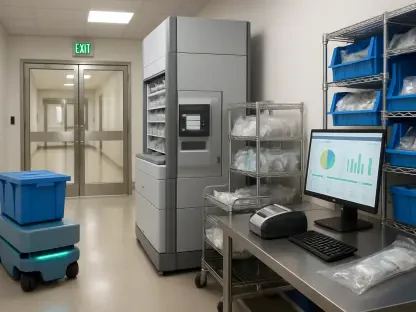Rural healthcare in South New Zealand, particularly in regions like Southland and Otago, is confronting mounting challenges. The combination of geographical isolation, limited resources, and increased complexity of healthcare needs is straining the system. As primary care providers call for government intervention, a comprehensive strategy is essential to improve access to primary healthcare services in these rural areas. Without concerted efforts and tangible solutions, the disparity in healthcare outcomes between urban and rural populations could continue to widen, impacting the overall health and well-being of these communities.
Growing Complexity in Rural Healthcare
Primary care providers face increasingly complex healthcare issues. Recently retired GP Pippa MacKay pointed out that this growing complexity adds significant burdens to already overstretched rural healthcare services. The intricate medical needs of patients often involve multiple conditions and require more time and expertise to manage, presenting a daunting task for rural general practitioners (GPs). This reality is compounded by the fact that rural GPs often work with fewer support staff and resources compared to their urban counterparts, making it even more challenging to provide comprehensive care.
Additionally, rural healthcare providers must deal with unique local health conditions, such as higher rates of respiratory illnesses and mental health issues due to isolation. These factors contribute to the critical need for government support and targeted solutions to alleviate these compounded challenges. The absence of specialized services locally means that rural residents may have to travel long distances for care, further exacerbating the healthcare problem by creating delays and increasing the burden on patients and their families.
Recommendations for Improvement
To address the challenges, Tracy Hicks led a comprehensive review supported by 16 clinical and non-clinical volunteers, resulting in five key recommendations. These recommendations are aimed at medium to long-term improvements in rural healthcare. One significant proposal is to empower primary care teams to handle diagnostics and perform minor specialist services locally. This would reduce the need for patients to travel long distances to reach base hospitals, thus improving access to timely care. Integrating these services closer to home could alleviate stress and improve health outcomes by ensuring that patients receive timely and appropriate care.
Another recommendation is to streamline the framework for funding and resource allocation to better match the specific needs of rural communities. This approach would recognize the unique challenges of rural healthcare, where resources are often spread thin across vast and sparsely populated areas. Effective resource allocation could help to ensure that rural healthcare providers have the tools and support they need to deliver high-quality care. This would also address the issue of healthcare inequity and contribute to a more balanced healthcare system overall.
Logistical and Geographic Barriers
The Southern region faces significant geographic and logistical challenges, given its vast and dispersed population. With 36 out of 78 practices classified as rural, the barriers to effective healthcare delivery are profound. Inadequate transport options often mean patients struggle to access essential services, especially during emergencies or after hours. The vast distances between healthcare facilities and patients’ homes exacerbate these challenges, making it difficult to provide timely and consistent care.
Moreover, the difficulty in sharing patient data across various care providers hampers the effectiveness of treatments and continuity of care. The need for a collaborative approach to staffing and shared patient data is critical to overcoming these logistical hurdles, ensuring that patients receive consistent and coordinated care. Effective data sharing could improve decision-making and streamline the patient journey, reducing redundancies and enhancing the overall efficiency of the healthcare system. A more coordinated effort among healthcare providers could also lead to better patient outcomes and higher satisfaction rates.
Inadequate Funding and Resource Disparities
There exists a glaring disparity between the funding received and the actual needs of rural communities. The financial models currently in place fail to adequately address the unique challenges posed by rural healthcare. This imbalance leads to under-resourced facilities and overburdened staff, further exacerbating the healthcare delivery issues. The lack of sufficient funding can result in outdated equipment, insufficient staffing, and limited access to essential services, all of which contribute to subpar healthcare outcomes.
The urgent need for a Southland Rural Health Strategy has been highlighted to ensure that rural healthcare receives appropriate funding and strategic support. This strategy would focus on equitable resource distribution, infrastructure development, and enhanced service delivery tailored to rural communities. By addressing the systemic funding issues, such a strategy could help to create a more sustainable and resilient healthcare system, capable of meeting the needs of its population. Investment in rural healthcare could lead to long-term benefits, including improved health outcomes, reduced healthcare disparities, and a more attractive work environment for healthcare professionals.
Government and Institutional Efforts
Acknowledging these challenges, Associate Health Minister Matt Doocey pointed out ongoing efforts to improve rural healthcare access. Initiatives such as the Ka Ora rural after-hours telehealth service and modifications to the national travel assistance scheme aim to provide immediate relief. Also, measures to attract GP trainees to rural areas are steps in the right direction, addressing long-term staffing shortages. These efforts reflect a commitment to understanding and addressing the unique needs of rural healthcare providers and patients alike.
Additionally, local governments and health institutions have started to recognize rural communities as a priority. Strategic planning, such as incorporating rural health needs into broader health policies and enhancing preventive healthcare, forms an essential part of addressing these challenges. Focused interventions that target the root causes of healthcare disparities can lead to more equitable healthcare delivery and better overall health outcomes for rural populations. By making rural healthcare a priority, policymakers can work towards creating a more inclusive and effective healthcare system.
Local Initiatives in Motion
Health New Zealand Te Waipounamu regional commissioner Chiquita Hansen highlighted the importance of the review findings in shaping future decision-making and funding allocation. Tailored initiatives, such as the new birthing unit and after-hours service for Wanaka, demonstrate a commitment to addressing specific community needs. These projects are designed to provide essential services that are both accessible and effective, ultimately improving the quality of care available to rural residents.
The Te Waka Hauora o Waitaki Health Futures Project is another notable local initiative aimed at improving healthcare services in rural areas. These projects reflect a broader trend of community-focused, bottom-up solutions that strive to enhance healthcare accessibility and quality. By involving community members in the planning and implementation process, these initiatives ensure that the services provided are relevant and responsive to the actual needs of the population. Such grassroots efforts can lead to more sustainable and effective healthcare solutions.
Enhanced Telehealth and Training Programs
Rural healthcare in South New Zealand, especially in areas like Southland and Otago, is facing numerous growing challenges. The combination of geographical isolation, limited healthcare resources, and the increased complexity of medical needs is putting a significant strain on the system. These regions are often far from larger medical facilities, making it difficult for residents to receive timely and comprehensive care. Primary care providers are urging the government to step in, highlighting the necessity of a thorough strategy to enhance access to healthcare services in these rural communities. A well-rounded plan could include increasing funding, improving infrastructure, and encouraging healthcare professionals to work in these underserved areas. Without deliberate and effective measures, the gap in healthcare outcomes between urban and rural populations is likely to expand, adversely affecting the health and well-being of people in rural Southland and Otago. It’s crucial for policymakers to address these disparities to ensure equitable healthcare access for all.









